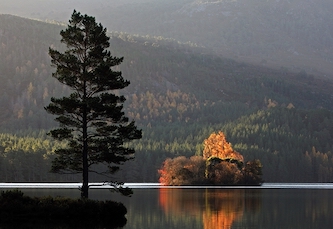A new report commissioned by Scottish Environment LINK, has assessed the socio-economic benefits of Scotland’s National Parks for businesses working within them.
Scottish Ministers are currently considering whether to designate Galloway as Scotland’s third National Park.
Scotland’s two existing National Parks are long established – Loch Lomond and the Trossachs was designated in 2002 and Cairngorms a year later.
“Between them they generate an annual economic benefit of more than £700m, which is more than 30 times the resource provided to them by the Scottish Government,” said Scottish Environment LINK.
“While not all that economic impact will be directly associated with National Park status, studies in the US and Finland have shown that funding for National Parks has generated a 10 to 1 economic return on investment.
“This outcome aligns with one of the four statutory aims for National Parks Authorities, established under the National Parks (Scotland) Act 2000, which is to ‘promote sustainable economic and social development of the area’s communities.’
“Combined, Scotland’s two National Parks directly provide around 250 jobs, across a diverse range of roles, many requiring professional qualifications and practical skills and experience.
“This broadens the employment options in rural areas and supports the new types of jobs and skills needed to tackle the climate and nature crises, including countryside rangers, planners, archaeologists and education officers.”
The report said that Scotland’s National Park Authorities have been instrumental in supporting the development of affordable housing in their areas.
About 62% of homes built in Loch Lomond and The Trossachs between 2018 and 2022 were affordable, well above Scottish Ministers’ national target of 25%, and Cairngorms National Park has a target of 75% new homes being affordable by 2030.
Scottish Environment LINK calls itself “the forum for Scotland’s voluntary environment community, with over 40 member bodies representing a broad spectrum of environmental interests with the common goal of contributing to a more environmentally sustainable society.”
It is core funded by membership subscriptions and by grants from NatureScot, Scottish Government and Charitable Trusts.
Deborah Long, Director of Scottish Environment LINK, said: “Scotland’s National Parks are all about supporting natural and cultural heritage, through conservation and restoration and through promoting responsible recreation and tourism. But they also, between them, bring significant sustainable economic and social development for communities in their areas. This should, we believe, be much more widely understood.
“With more than two decades of delivery across the Cairngorms and in Loch Lomond and the Trossachs, the results speak for themselves. Our two National Parks deliver substantial economic benefits through direct employment, responsible tourism and other indirect income boosts for businesses operating within them. Fundamentally, they also deliver higher proportions of affordable new housing.
“A National Park is an opportunity for local communities, who always form the majority on a National Park Authority Board, to deliver across all these objectives as a whole. This report helps make the case not just for the designation of Galloway, currently under consideration by Ministers, but for further National Parks elsewhere in Scotland in the future.”
Nikki Sinclair, National Parks Strategy Project Manager for the Scottish Campaign for National Parks and for Action to Protect Rural Scotland, said: “This report sets out how our existing National Parks deliver for people living and working in them, and for businesses based in them. It seems that residents of communities in iconic landscapes across Scotland have missed out, economically, over the two decades when not one new National Park was designated.
“Our National Parks do of course support the protection and restoration of nature, and this is likely to be the basis for the overwhelming public support for them. But the evidence is clear: the social and economic case for them is also strong.”
Craig Mills, CEO of the Cairngorms Business Partnership, said: “Being part of the Cairngorms National Park significantly boosts local businesses by leveraging the park’s strong branding and reputation. We have found that this association helps our tourism businesses grow and attract new customers, bringing in valuable investment and development.
“A strong partnership has been built between our members and the National Park Authority as we work together to boost the appeal of the area and support the growth of the local economy.”
Morven Taylor, Acting Chief Executive Officer of The Communities Housing Trust, said: “The Communities Housing Trust have worked on many affordable housing projects within the Cairngorms National Park Authority area.
“The National Park has demonstrated its determination to provide affordable housing in the park and we support their target of 75% of new housing being for social rental, mid-market rental and other affordable categories that provide affordability in perpetuity.
“Our own projects have housing tenures including low-cost home ownership with a Rural Housing Burden title condition to protect future affordability in perpetuity, Rent to Buy homes and protected discounted self-build plots. We have worked in partnership with many local community organisations and businesses to establish their housing requirements. Creating opportunities to make the local communities thrive and remain vibrant is at the heart of our work.”
